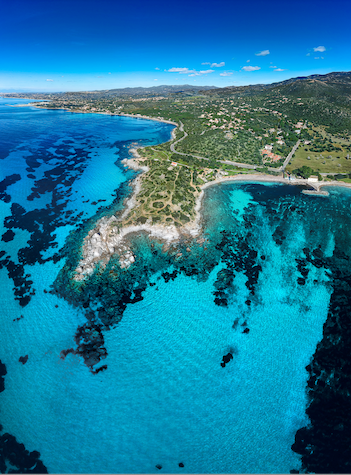Speaker
Description
Crilin – a semi-homogeneous, longitudinally segmented highly granular electromagnetic calorimeter with Cherenkov PbF2 crystals has excellent timing and improved radiation resistance. A two-channel front-end prototype was tested at CERN-H2 with 120 GeV e- using PbF2 and PWO-UF crystals, yielding a single-cel timing resolution <30 ps for energy deposits <3 GeV. Crilin prototype consists of two sub-modules, housing a 3-by-3 crystal matrices and layers surface-mount 10 um pixel-size UV-extended SiPMs, handled via a fully custom microprocessor-controlled front-end, providing signal amplification/shaping and all slow control functions. The relative CAEN-V1742 based 5Gsps digitisation system employs a custom ultra-low-jitter trigger distribution electronics.
Summary (500 words)
Crilin - a semi-homogeneous, longitudinally segmented electromagnetic calorimeter concept based on Cherenkov PbF2 crystals, features fine granularity, excellent timing, good pileup capability and energy resolution, along with improved radiation resistance. Its modular architecture, featuring stackable and interchangeable sub-modules, allows crystals granularity, transversal and longitudinal dimensions scaling to maximize performance. Crilin was optimised in the ambit of the Muon Collider experiment as a candidate for an electromagnetic barrel calorimeter. Its architecture was also adopted as a candidate for the Small-Angle-Calorimeter for the HIKE experiment. A two channel Crilin front-end prototype was tested at CERN H2 using 120 GeV e- beams, to study light collection dynamics, and validate the readout chain using PbF2 and novel PWO-UF crystals. A timing resolution < 30 ps for energy deposits > 3 GeV can be expected from a single calorimeter cell.
In its current design, Crilin prototype (Proto-1) consists of two sub-modules, each composed of a 3-by-3 crystals matrix and a photosensor board housing a layer of 36 surface-mount 10 um pixel-size UV-extended SiPMs – thermalized using an additively manufactured micro-channel heat exchangers – so that each crystal has two independently processed and digitized readout channels, composed by the series connection of two photosensors. SiPMs are handled via micro-coaxial transmission lines by a remote fully custom microprocessor-controlled front-end system. Each front-end houses a two-stage high-speed current-feedback amplifier and a pole-zero shaper for a total of 18 readout channels, while providing individual bias regulation, temperature, and current monitoring – for all photosensors. A high-speed switched-capacitor array digitization system based on CAEN V1742 DRS4 modules, employing a custom ultra-low-jitter trigger distribution and synchronization electronics, is being developed to allow Crilin Proto-1 digitisation at 5 Gsps and handle its improved timing performances.
A full description of the system and the qualification of custom high-voltage linear regulators, amplification, and digitisation stages will be shown. The custom trigger distribution allows a DRS4 synchronisation with a 5 ps channel-to-channel (within the same chip) and 30 ps board-to-board jitter capabilities, still under improvement.
Pictures of Crilin’s front-end and SiPM boards are shown in attachment along with a photo of the assembled Crilin Proto-1.
